Choosing the right animals is key to being a successful aquarium owner! Careful planning before purchasing will allow you to curate a happy and thriving marine aquarium. Start simply and expand as you become more experienced to avoid animal mortality, personal disappointment, and wasted money. Selecting animals for maximum success allows you to keep your pets alive and minimize impacts on natural reefs.
There are over 2,000 varieties of fishes and other marine animals available for purchase. However, many may not be good choices for your aquarium. There are general parameters for life such as temperature, salinity, and filtration that must be met in addition to each animal’s individual needs. Research before you buy and consider:
- Is your tank environment appropriate for the animals?
- Can the animals coexist?
- Can you meet the needs of the animals?
- Will the animals meet your expectations?
Consider these characteristics for each animal before adding it to your tank.
Note: The fish examples provided below have been selected for beginner level hobbyists. These fish characteristics are aimed at helping with species selection. Considerations of issues with tank mechanics and maintenance - such as number of animals in a tank- are well addressed by other sources.
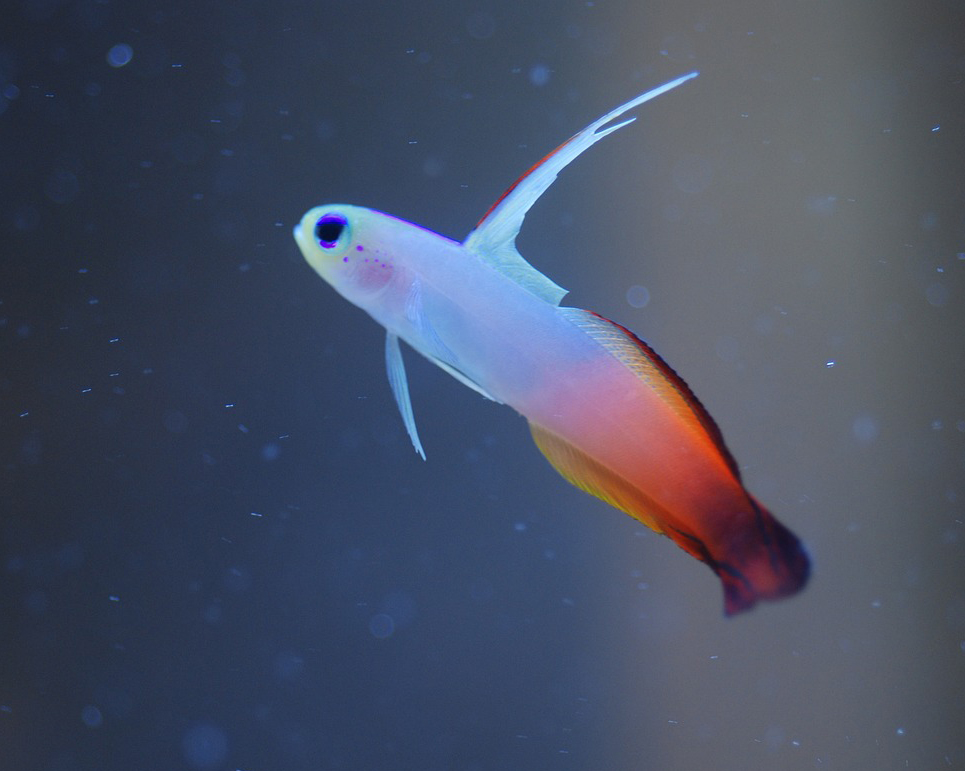
FIREFISH
(Nemateleotris magnifica)
Stays small
Maximum size = 3 inches
BLUE TANG
(Paracanthurus hepatus)
Gets big
Maximum size = 12 inches
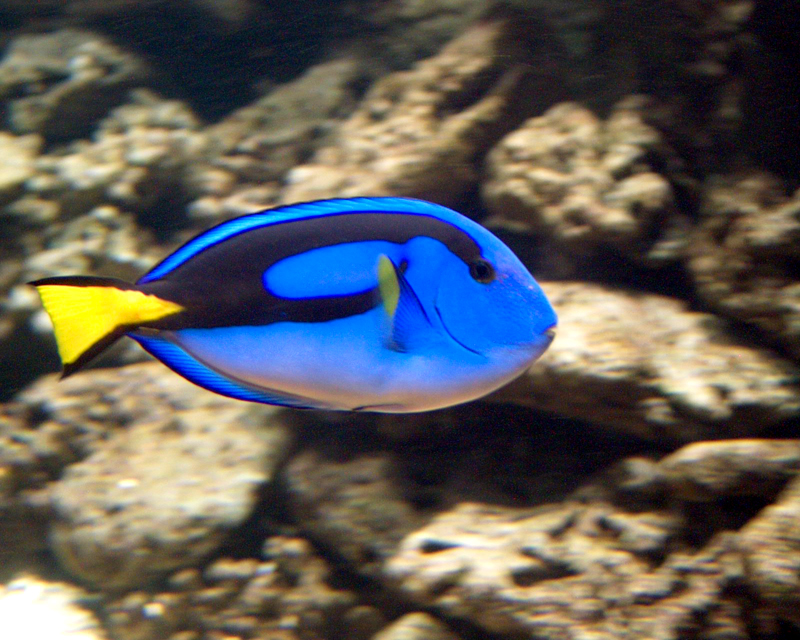
Many aquarium pets are sold as small juveniles. They will grow substantially during their lifetime. It’s important to know how big an animal will get before adding it to your tank. It should fit comfortably in your aquarium as a full-grown adult. Also consider the size and number of other animals in the tank to avoid overcrowding.
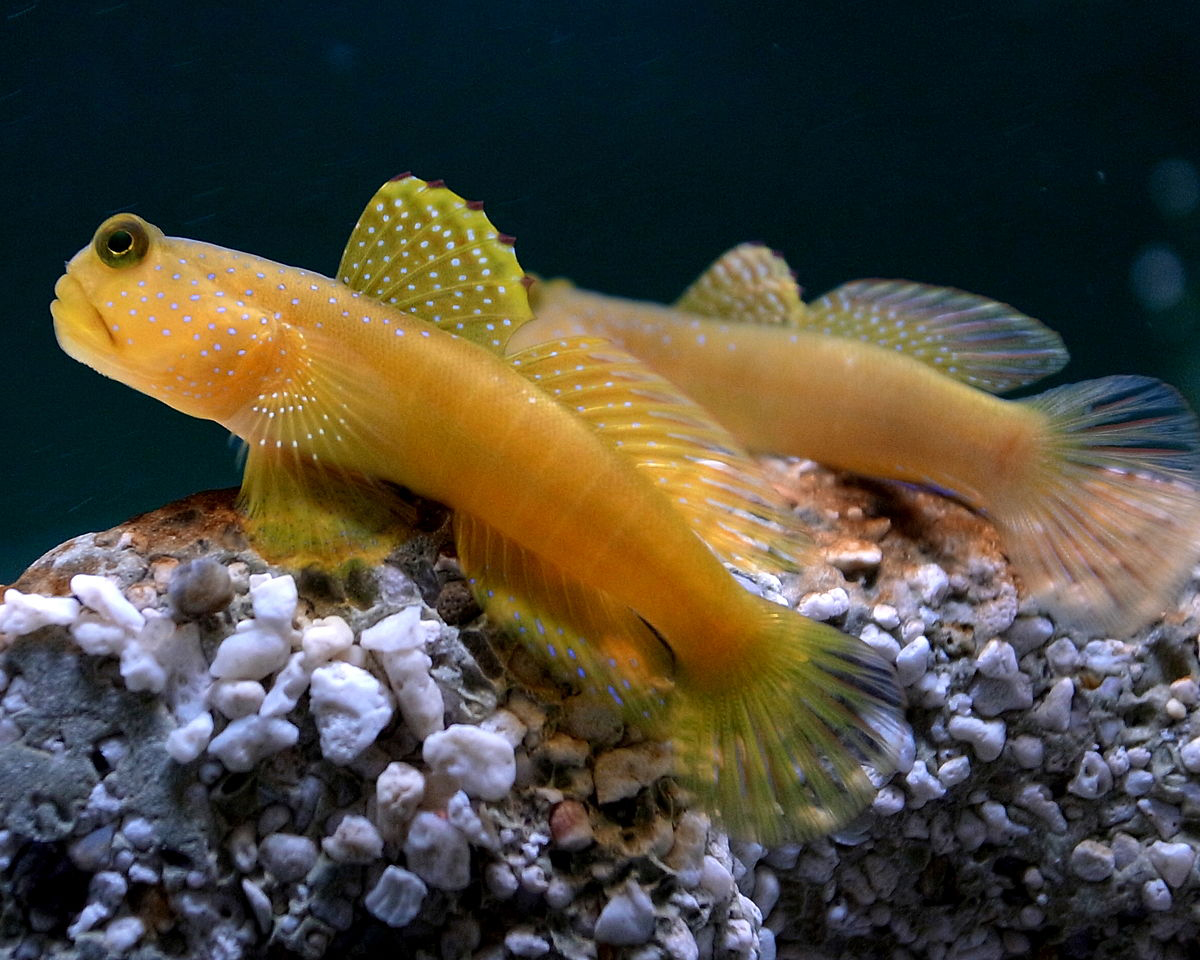
WATCHMAN GOBY
(Cryptocentrus cinctus)
Easy to feed
Happily eats pellet/flake foods
COPPERBAND BUTTERFLYFISH
(Chelmon rostratus)
Difficult to feed
Feeds on live, soft-bodied prey such as worms
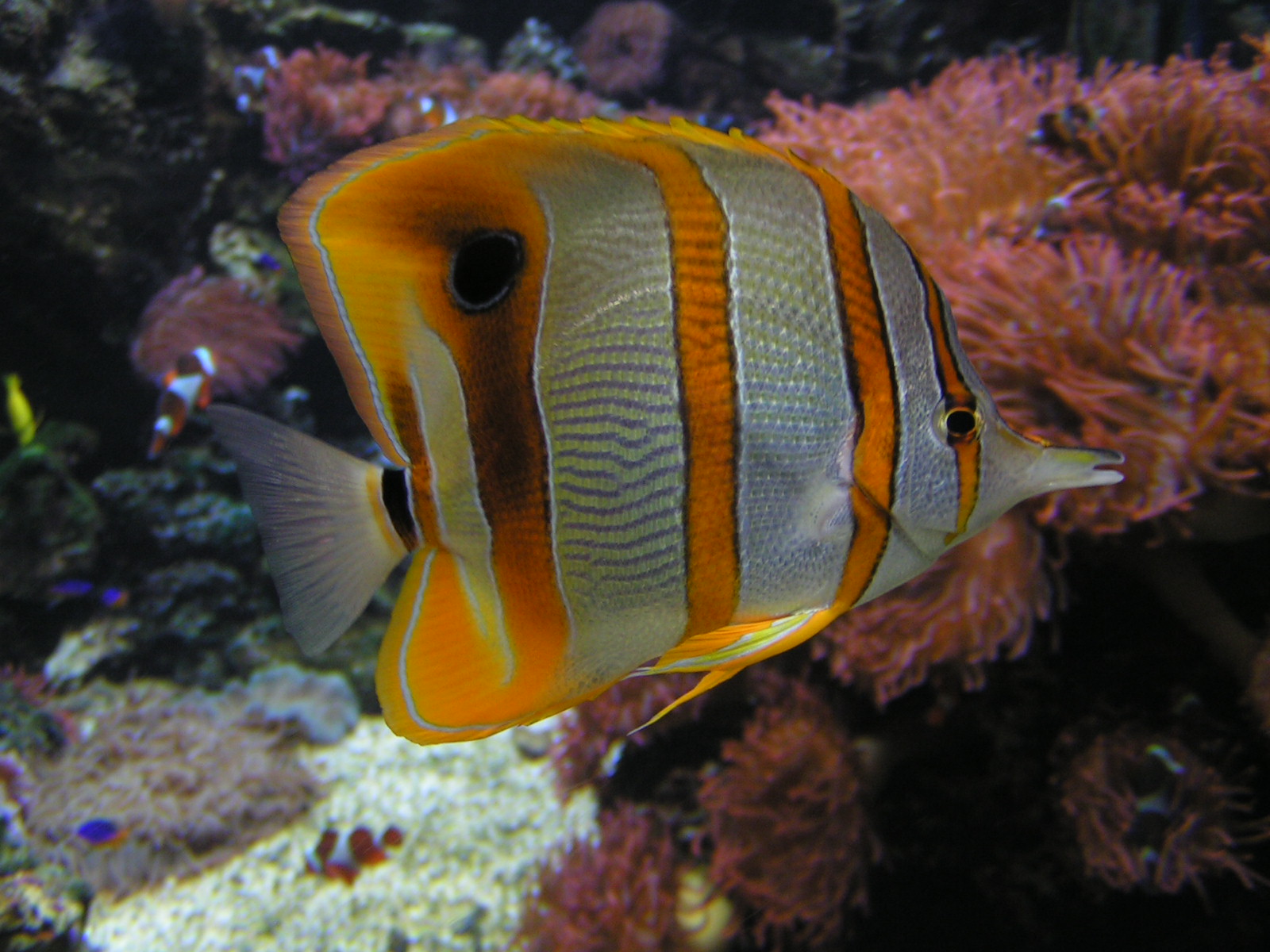
Some aquarium animals can thrive on flake or pellet food that is available at your local aquarium store. Others are much pickier, needing food that is live and/or hard to get. Determine the dietary needs of your prospective pet and make sure you can obtain this type of food.Furthermore, knowing if your prospective pet is a carnivore (meat eater), herbivore (plant eater) or omnivore (meat and plant eater) will help you plan a peaceful tank. Carnivorous fish, especially large ones, are more aggressive and may consume smaller tankmates as snacks. Similarly, herbivores, like snails, may prefer to eat the plants you have in your tank instead of the algae on the tank glass. It’s important to research the diet and behavior of potential new additions before adding them in to your system.
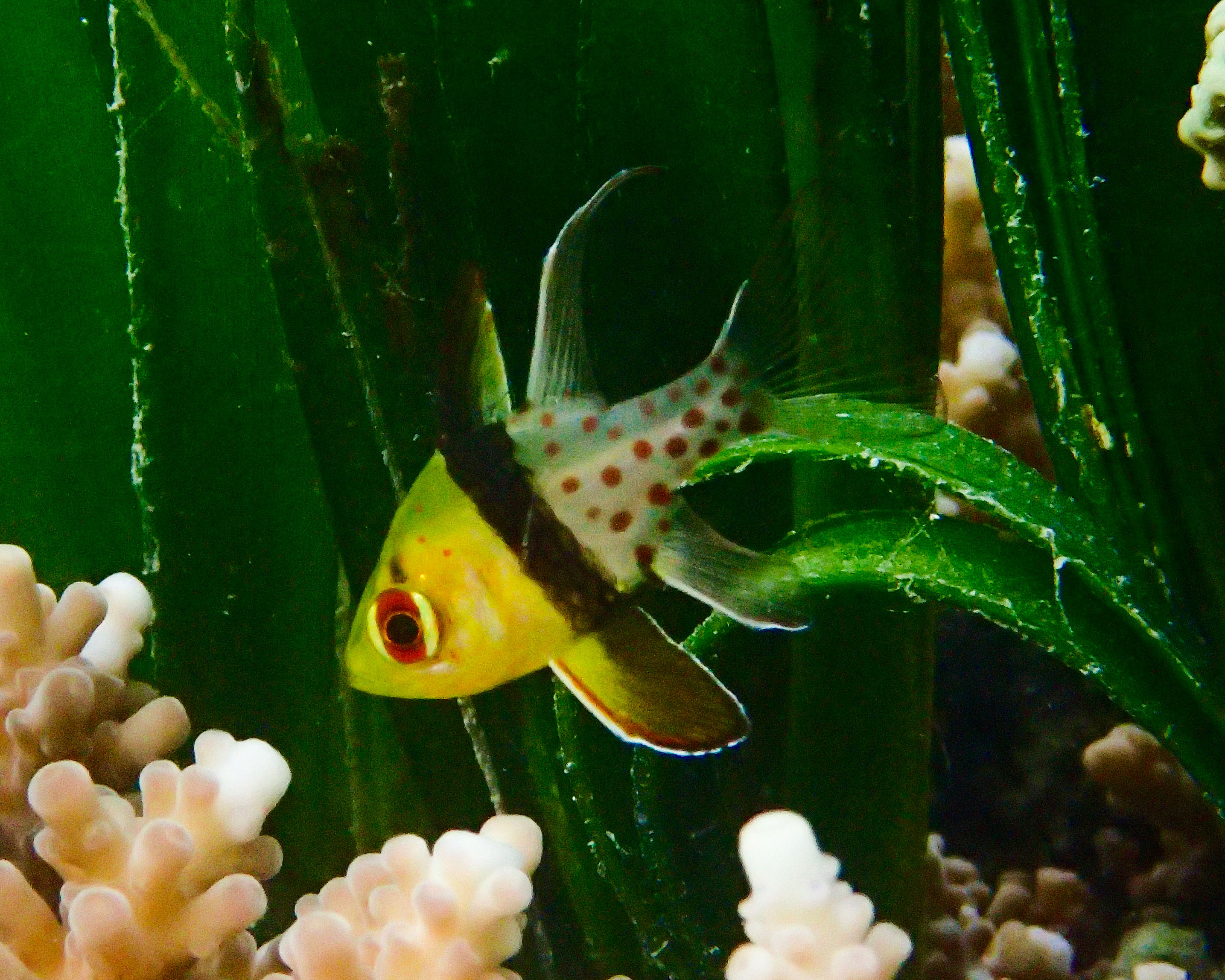
PAJAMA CARDINALFISH
(Sphaeramia nematoptera)
Peaceful fish that is happy in groups and does not bother other fish
NIGER TRIGGERFISH
(Odonus niger)
Very aggressive. A large carnivore who will eat smaller tank-mates.
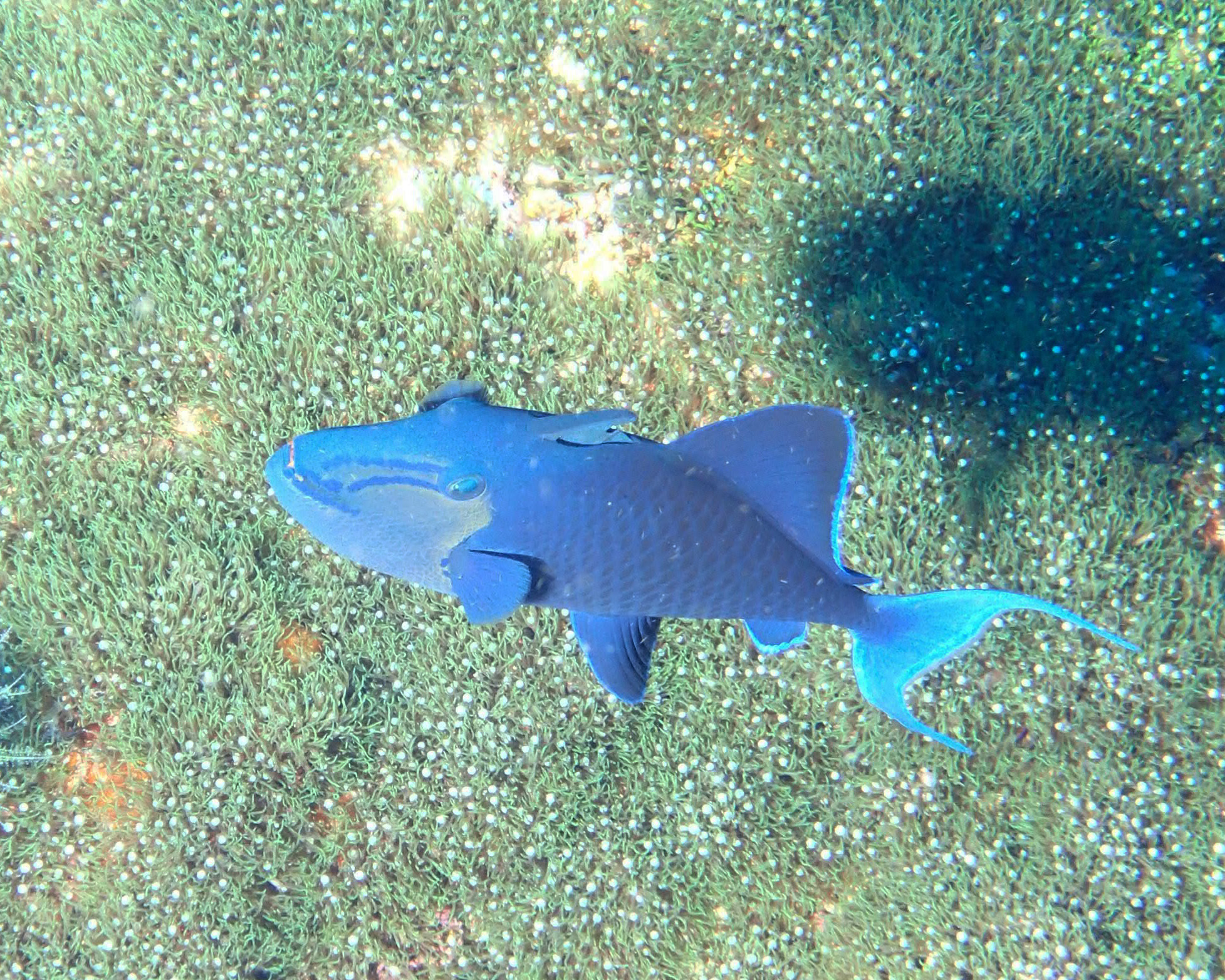
It is important everyone gets along in the tank. Aquarium animals have a wide range of behaviors that make them good or bad tankmates. Some fish are territorial or aggressive, starting fights and injuring or killing their neighbors. Other fish prefer to be in groups of their own species and don’t like to be alone. Some fish will eat coral or other invertebrates. There are plenty of resources online that can help you determine whether species are compatible.
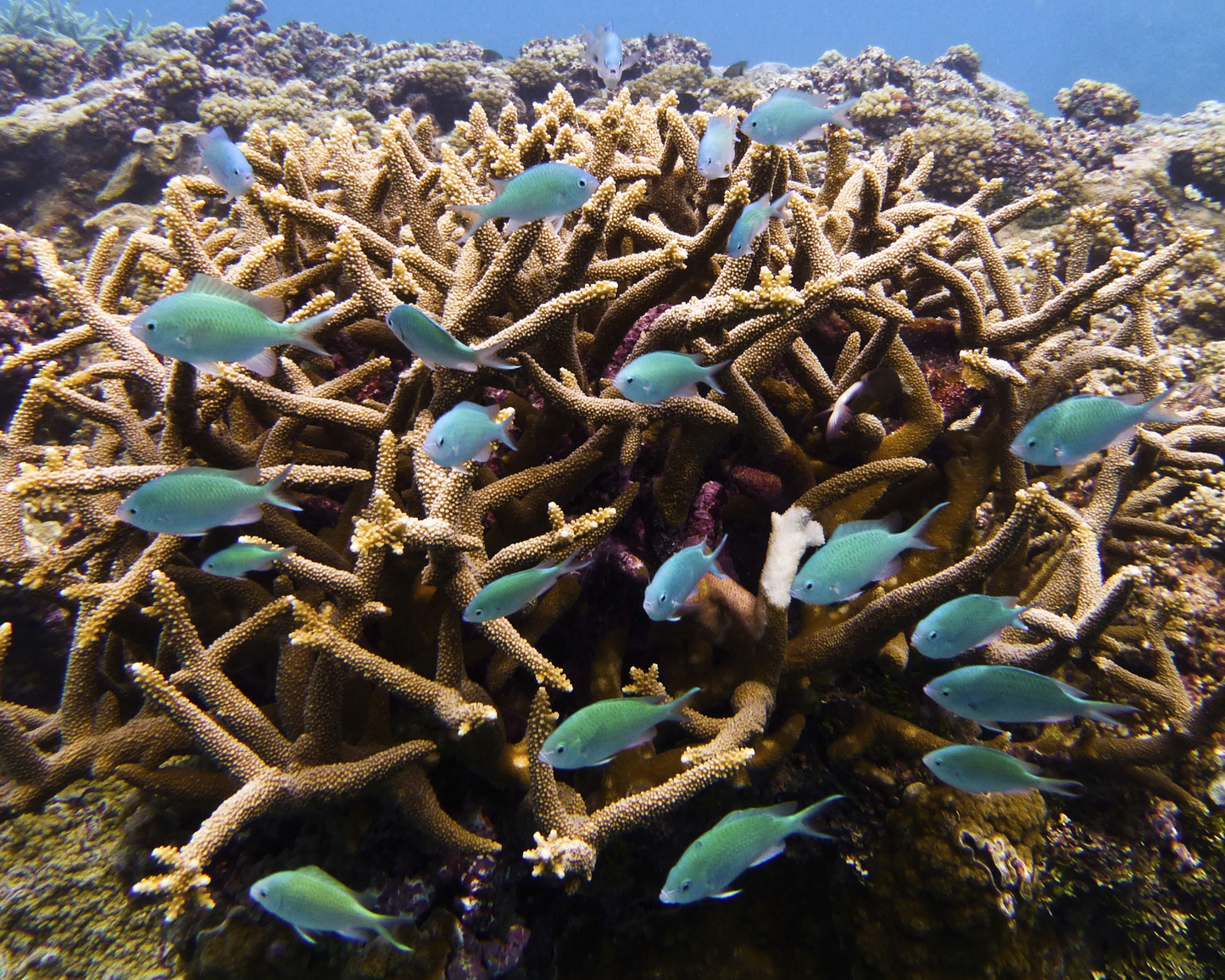
Chromis ssp.
Like to live in groups, don't require much habitat
Angelfish spp.
Require lots of space and lots of places to hide
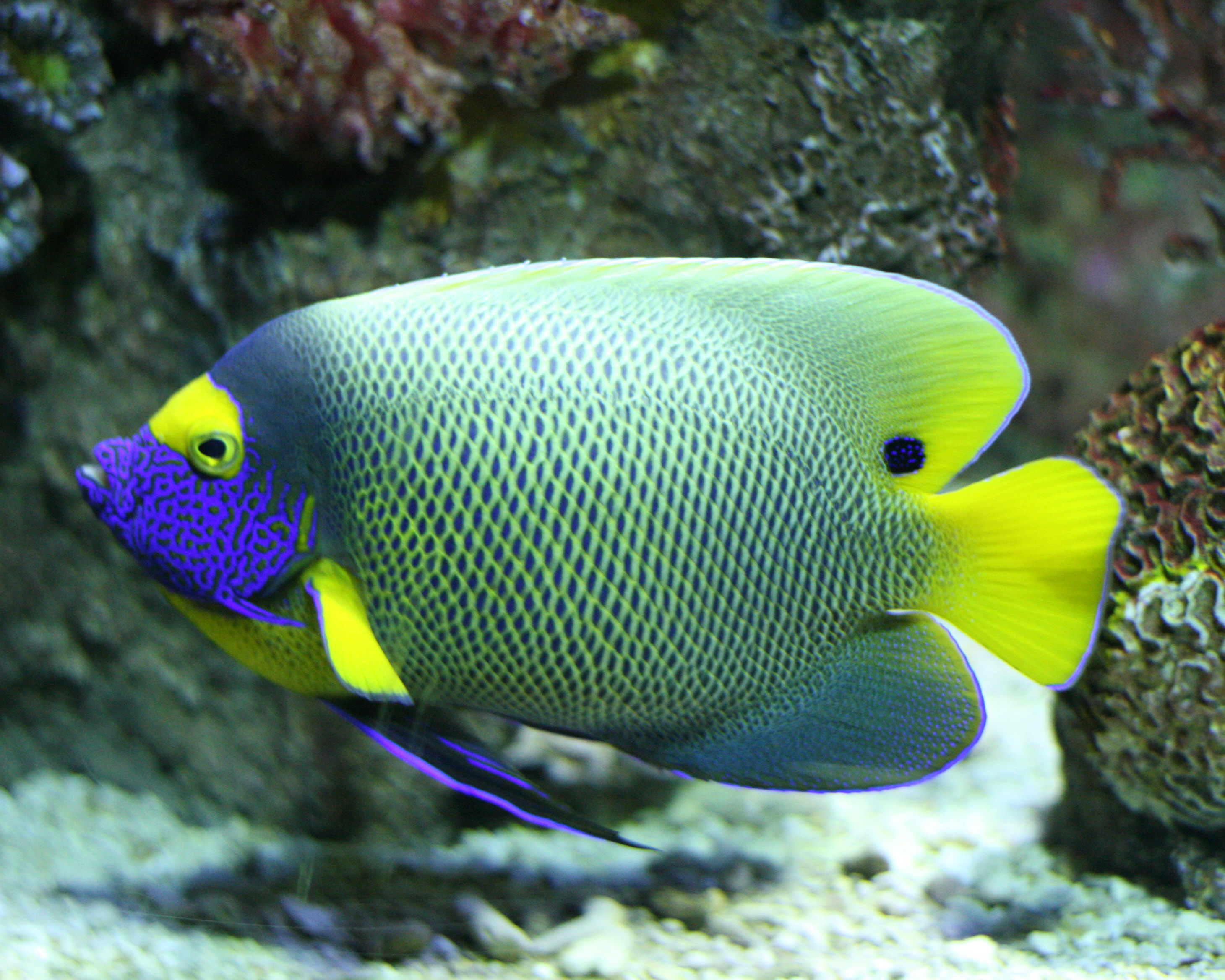
Many animals require specific types of habitat or shelter that need to be created in your tank. Some fish like to hide and some need a place of their own. For example, if you have three fish that like to hide when startled, one cave may not be sufficient for all three. Providing plenty of shelter for your animals will help reduce competition for space and promote a peaceful tank.
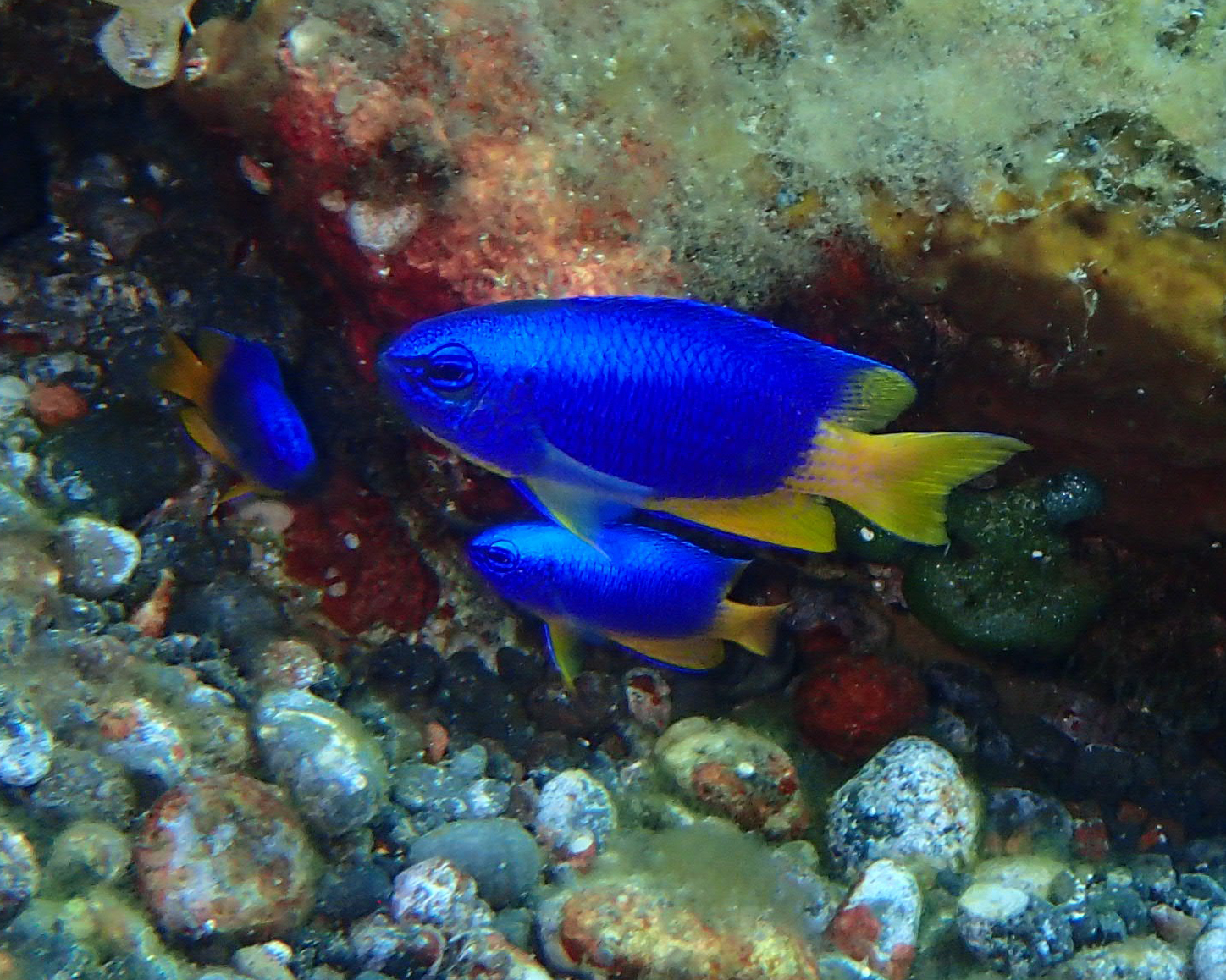
AZURE DAMSELFISH
(Chrysiptera hemicyanea)
Inexpensive, hardy small fish.
~$6 per fish
CROSSHATCH TRIGGERFISH
(Xanthichthys mento)
Very expensive.
~$1,200 per fish.
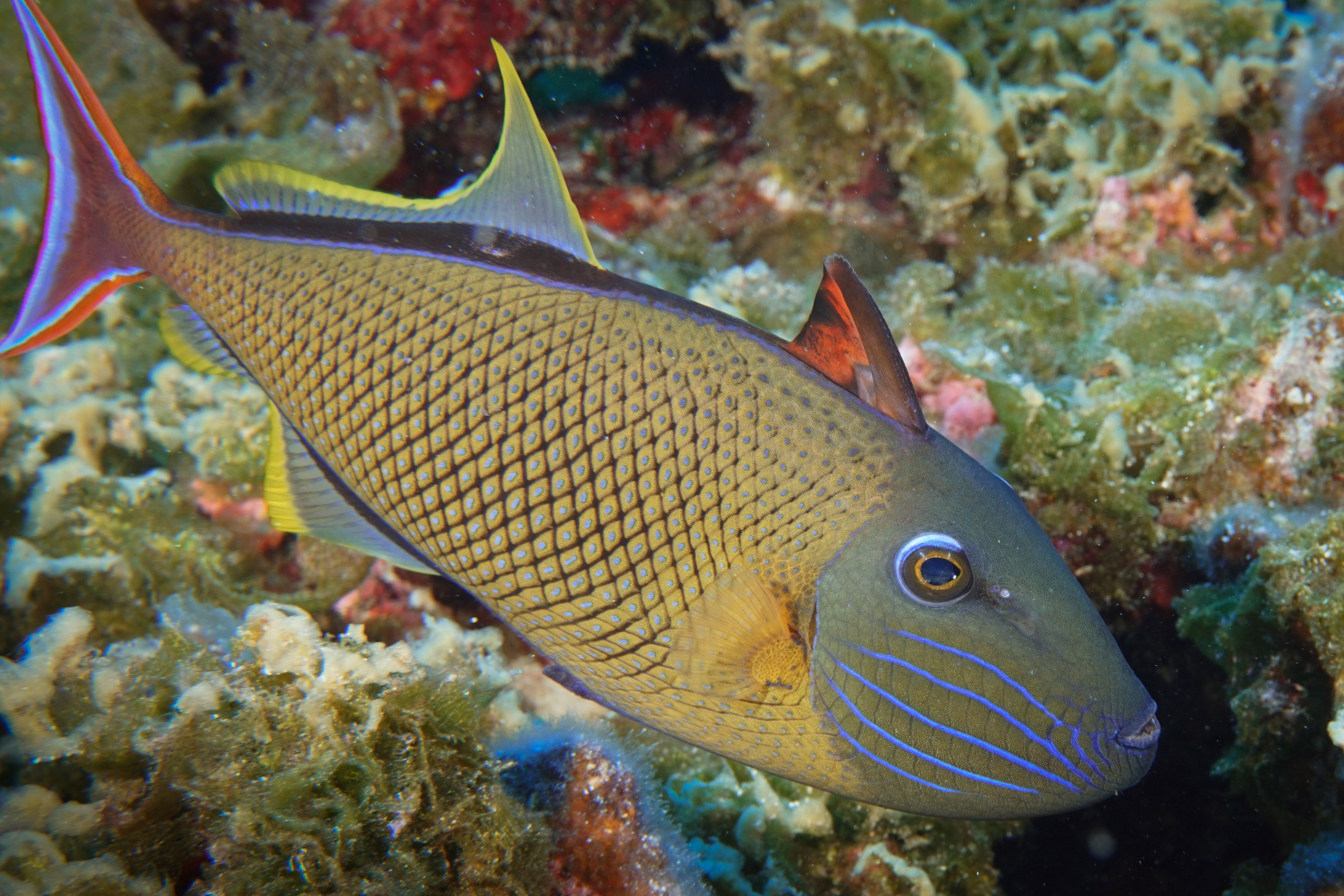
Aquarium keeping can be a very expensive hobby, so it’s important to decide how much you’re willing to spend before you start. Many things influence aquarium price, but size, type of aquarium and type of animals will be the biggest price determinants. Identifying the costs for your ideal aquarium before you start making purchases will keep you within your desired budget and ensure the aquarium meets your expectations.
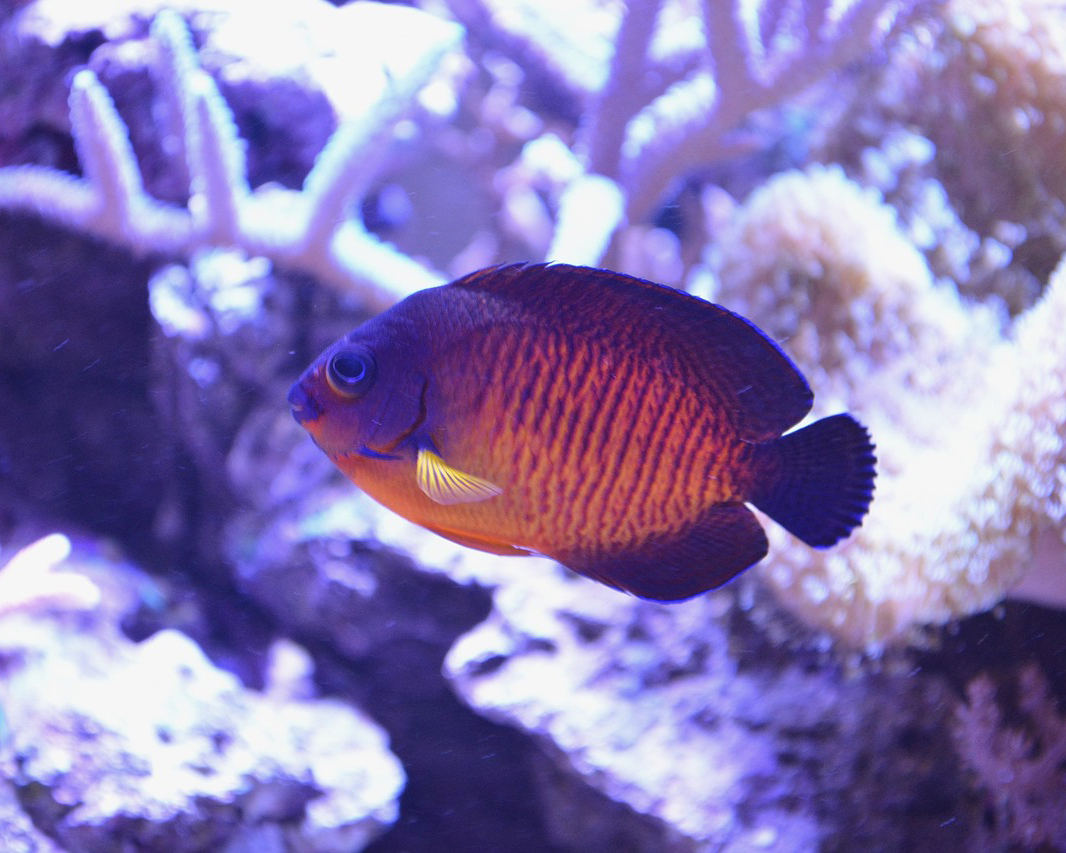
CORAL BEAUTY
(Centropyge bispinosa)
High visibility.
Very colorful and social fish.
MARINE BETTA
(Calloplesiops altivelis)
Low visibility.
Pretty fish that you don't see because it's nocturnal and hides.
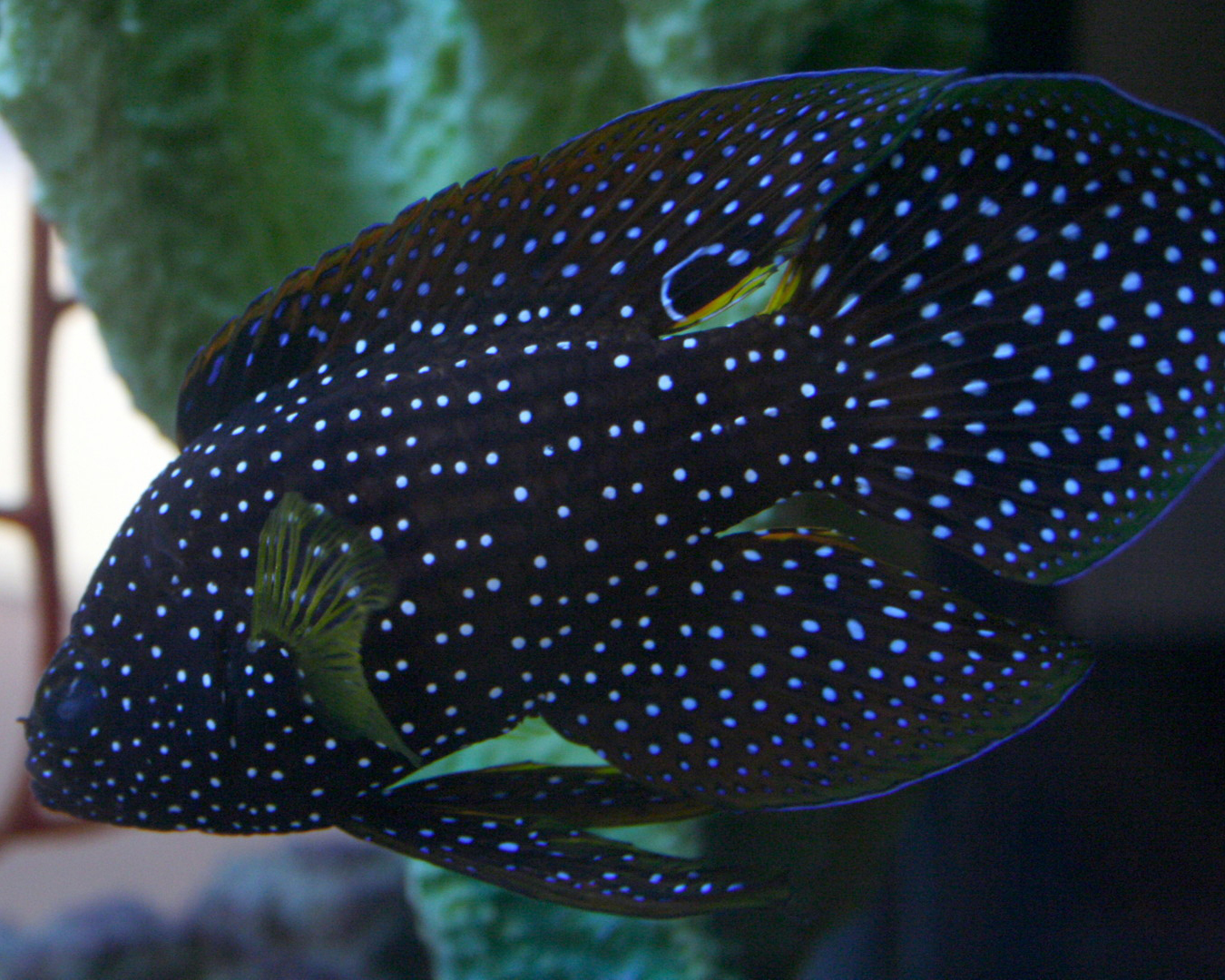
Credit: Ewen Roberts
Many hobbyists choose animals based on how they look. However, some aquarium pets have certain behaviors that make them difficult to see in a tank. Understanding the natural behavior of animals will help you select pets that meet your aesthetic expectations. If you want colorful and visible animals in your tank, avoid those that bury themselves, hide behind plants and rocks, or only come out at night (nocturnal).

OCELLARIS CLOWNFISH
(Amphiprion ocellaris)
Very easy to keep.
MOORISH IDOL
(Zanclus cornutus)
Very difficult to keep.
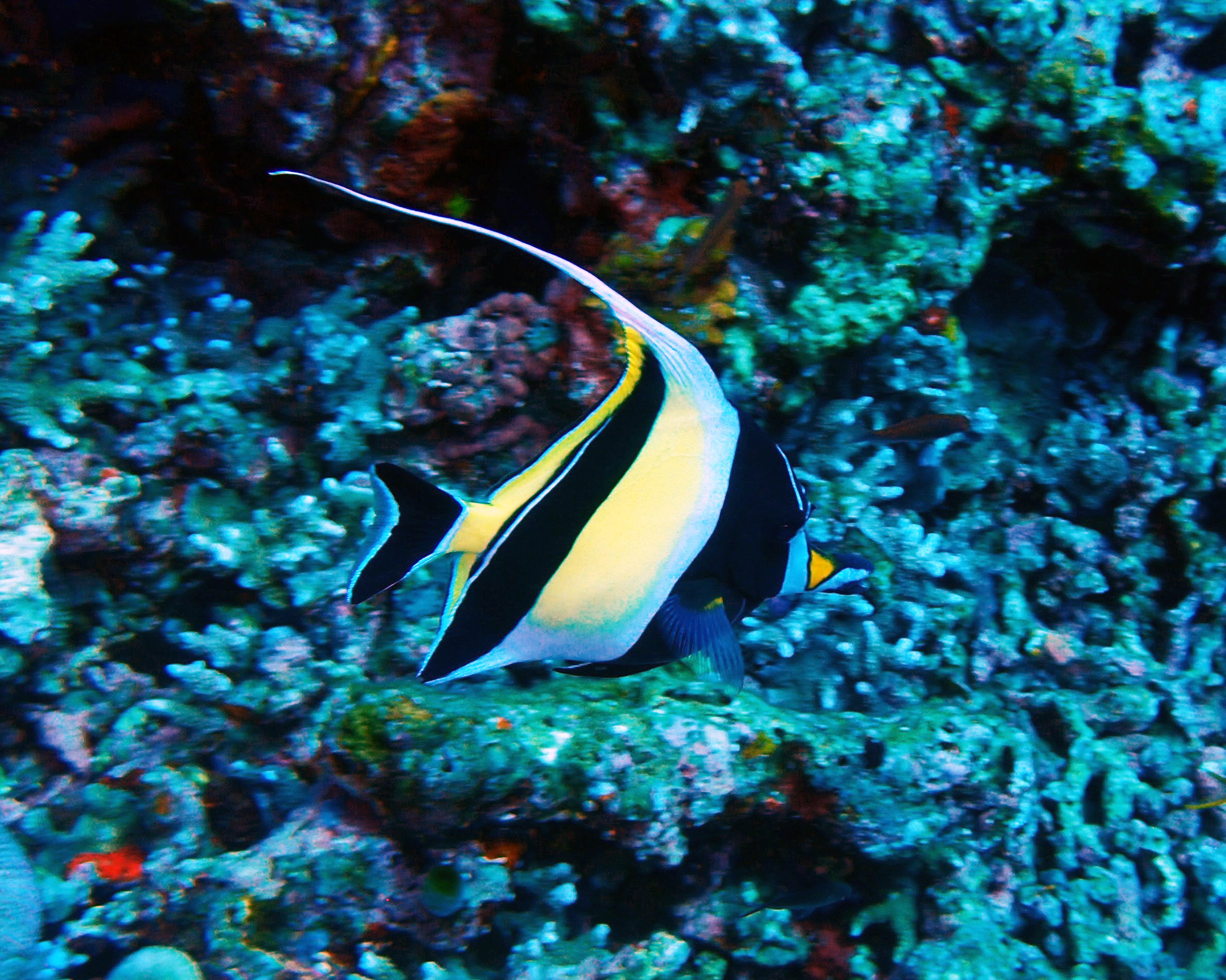
There are lots of compounding factors determining how challenging any particular animal is to keep. It is important to choose pets based on your experience level and ability to care for them. Many online aquarium websites state the difficulty of keeping a given fish and a quick web search can provide additional information. Choosing animals within your range of skills will help set you up for a successful aquarium experience.
Is Your Pet Legal?
It’s important to check whether the animals you’re considering for your aquarium are legal in your state. Most of us understand we can’t have pet lions, tigers or bears, but knowing whether your coral is legal is not as obvious.
Marine aquarium animals may be illegal for a few reasons:
- They are listed as threatened or endangered by the International Union for the Conservation of Nature (IUCN) and protected by US law (Lacey Act, Endangered Species Act) and international treaties (Convention on International Trade in Endangered Species).
- They are highly invasive and banned by the state or federal government
- They were collected without the appropriate permits, either in the US or abroad
Illegal animals may be sold in your area or online. There is always the chance of purchasing an animal collected illegally, which is beyond your control. However, you can familiarize yourself with animals banned in your state and/or country and make sure to comply with these regulations. Be sure to ask where your animals are from and how they were collected before you buy. It is important for you and your local environment.